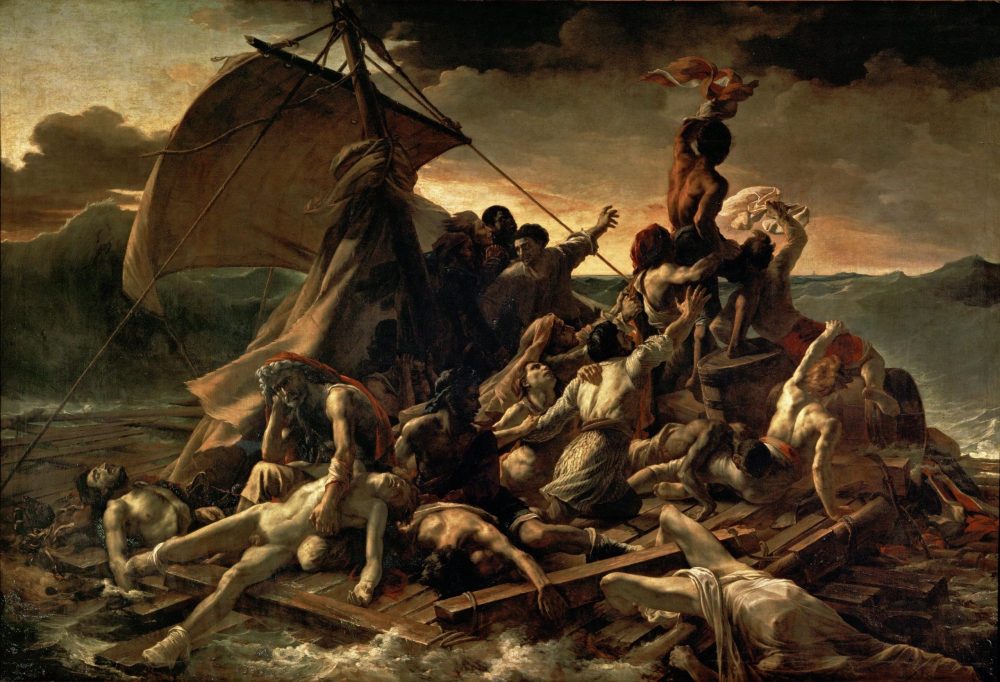Géricault
Fundamental Paintings to Understand the History of Painting
We could make this publication thanks to small donations. How is 3 minutos de arte supported?
The Raft of the Medusa (1818-19). Géricault
Oil on canvas. 491 x 716 cm
Museum of Louvre. Paris, France
The raft of the Meduse is a great work not only for its size but also because it is an emblem of Romanticism. How can we assure this? In each Romantic work we are going to find passion, elevated feelings, emotions, desperation (the word passion comes from Late Latin passionem: “suffering, enduring” and those extreme feelings are often close to desperation).
That passion often has two paths: it takes us to idealization or to tragedy.
Romanticism is the movement that opposes Neoclassicism. In Neoclassicism calm, irony, harmony and subtlety prevail. In Romanticism exaggeration, chaos and emotions prevail.
Neoclassicism puts a lot of effort in drawing and detail, and Romanticism expresses with a vibrant and fast brushstroke, which gives more movement, more life to figures, although sometimes they seem sketches, unfinished ones.
In this work, the artist chooses his palette of colors and works on the light so as to increase drama. This reminds us of the “theatricality” of the Baroque works, some centuries before.
Géricaut painted one of the most representative paintings of the Romantic painting he chose one of the most horrible tragedies of the navigation history: in 1816, the frigate Medusa, of the French Navy wrecked near Mauritania, some 60 kilometers from the coast.
There was no place for everybody in the boats, so a raft was improvised and 147 people got crowded on it. The following 13 days were dreadful. Supplies were exhausted the first day, and the first night 20 people died (most probably assassinated). The following days were full of murders, suicides, desperation, hunger, thirst and even anthropophagy. Only 15 people survived.
The whole country was indignant and outraged by the situation. The painting Géricault exhibited in the Hall of Paris in 1819 generated conflicting emotions: scandal and admiration.
The Louvre acquired the work shortly after, and this young painter, who died at 32, is to stay with the greatest artists of the Romanticism and of all the history of art.
Recommended links:
Characteristic Elements of Romantic Painting.
Timeline: from Neoclassicism till the end of the 19th century.
Snow Storm – Steam-Boat off a Harbour’s Mouth (1842), Turner.
Third of May in Madrid (1814), Francisco de Goya.
You can also find more material using the search engine.
Would you like to support 3 minutos de arte?
Our project.




0 Comments